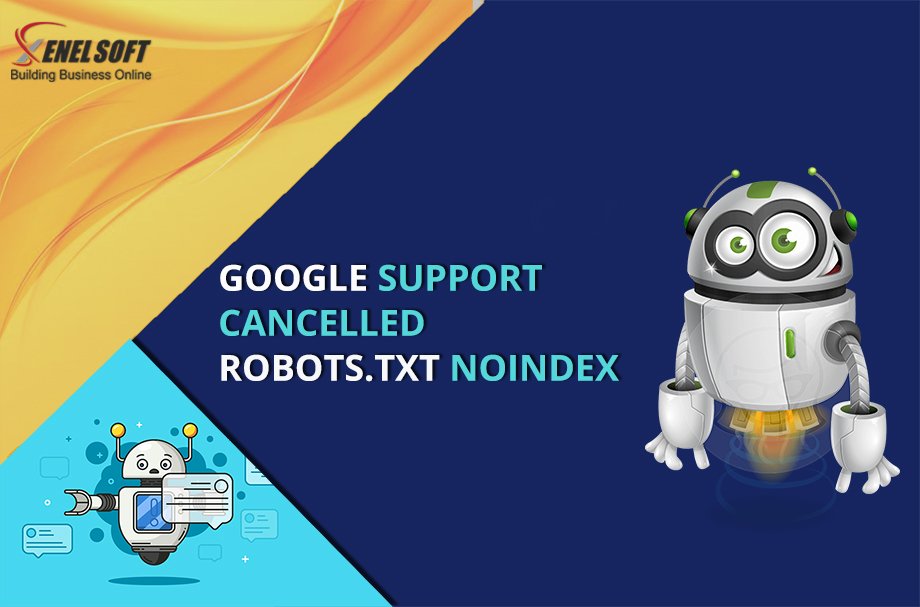Google has declared that Google Bot will never again follow a Robots.txt directive related to indexing. Distributors depending on the robots.txt no-index directive have until September 1, 2019, to remove it and start utilizing an option proposed by Google.

For anybody new to SEO, these might seem like a lot of remote terms. However, it is of significance to note. The Google or Google’s crawler is a bot that crawls through pages and adds them to the list, which is Google’s database. In light of this indexation, Google can rank various sites.
The Robot.txt directive is an order given by a site that tells the GoogleBot which pages on your site to go to and which pages on your site to maintain a strategic distance from. Typically it was utilized to optimize a website’s crawl ability, or the capacity for a crawling bot not to bump into any issues while going through a site.
1. What is the Reason behind Cancelling It?
While publicly releasing the parser library, the group at Google analyzed robots.txt standards and their utilization. Specifically, they concentrated on standards unsupported by web draft, for example, nofollow, crawl delay, and index. Since the standards were undocumented by Google, normally, the utilization related to GoogleBot is very low. Digging further, their group saw that the utilization was negated by a few different guidelines taking all things together, but 0.001% of robots.txt records on the web. The mistakes and errors hurt the sites’ presence in SERPs in a manner that preferably website admin didn’t need.
Google’s legitimate declaration on the morning of July 2nd said that were bidding adieu to unsupported and undocumented guidelines in robots.txt. Those depending on this set of standards should find out about the accessible alternatives posted by Google in their blog entry.
In their official blog about it, Google wrote this, directly before proposing options:
“To maintain a working and healthy ecosystem and prepare for potential open-source releases in the future, we’re retiring the codes that handle unpublished and unsupported rules (such as index) on September 1, 2019.”
Google does not consider the index Robot.txt an official order. They used to be on their side, but, it didn’t work in 8% of the cases. It was anything but a foolproof order. They have authoritatively unsupported index, crawl delay, and no-follow directives inside robot.txt documents. They have advised sites that have it to evacuate their orders till September 1, 2019. In any case, Google establishes that they have been asking sites not to depend on it for a long time.
Google accepts that sites hurt themselves more than they help themselves with these index mandates, as expressed by Gary Illyes. However, they have clarified that they have thoroughly considered this, particularly since they have been suspicious about these orders for such a significant number of years. They don’t hope to deny the index robot.txt to hurt anybody’s site significantly.
2. Suggested Alternatives by Google
Google did not want sites and organizations to be rendered defenseless with this change, so they gave a complete list of things one could do otherwise. If you happen to be influenced by this change, this is the thing that Google presented to options:
- Noindex in robots meta labels or the noindex directive is the best method to remove URLs from the record where crawling is permitted. This is upheld both in the HTTP response headers and in HTML.
- Utilizing 404 and 410 HTTP status codes, which is shorthand for the page not existing. This helps crawl bots drop such URLs from Google’s record once they’re crawled and processed.
- Utilizing password protection to hide a page behind a login will remove it from Google’s indexation. The special case is a markup utilized to show membership or paywalled content.
- Web search tools can file pages only if they know about it, so one can obstruct the page from being crawled with the goal that its content won’t be indexed. The web index may file a URL dependent on links from different pages, without seeing the content itself; however, Google is taking measures to make these pages less obvious.
- Search Console Remove URL tool is a fast and simple technique to remove a URL briefly from Google’s search items.
Google is trying to protect sites while likewise figuring out how to enhance the calculation that figures out which websites get the opportunity to go to the top. Google is ceaselessly changing their principles and guidelines, and their calculations and crawl bots, so this unexpected change was not surprising. It was, in any case, a generally intense change, yet Google has effectively settled security nets with the goal that no organization gets further antagonistically influenced by this change. They have given sites a good two months to change and conform to the adjustment in directives.
Do not forget to share the post on Facebook, LinkedIn, and Twitter!